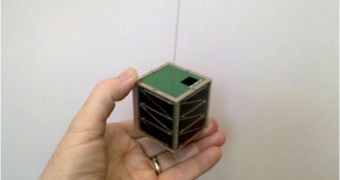Launching satellites into Earth's orbit is a very tricky business. Other than the dangerous nature of space launches themselves, there is also the issue of designing and producing a highly complex machinery, that also needs to be extremely resilient to conditions in space. But space experts now believe they've found the solution to this problem. They say that nanosatellites (up to 10 kilograms in weight) and picosatellites (up to 1 kilogram) are the future of space exploration, Space reports.
The portion of the international scientific community that deals with constructing space satellites has come to a simple conclusion – more complex is not always better. Designers and engineers decided to start constructing machines that would include the most advanced principles of electronics, and that take advantage of the most recent innovations in all fields. As such, the key concept in satellite construction is now miniaturization. Similar to the way cell phones and laptops get smaller and better, satellites are currently entering the same path, experts hope.
“That's the beauty of this technology. We can make these things small and still get meaningful science out of them,” says NASA Ames Research Center astrobiology expert Orlando Santos. He explains that reducing the average weight of satellites from 100-500 kilograms to 1-10 kilograms is an achievement all by itself. Fitting the same equipment – science instruments, radio systems, batteries, orbital control mechanisms and positioning systems – in a device several times smaller required multiple innovations. Reducing a satellite from the size of a bus to that of a backpack was also a massive success.
Another positive aspect of nanosatellites, and their smaller counterparts as well, is the fact that missions cost $2 million each or less. This price tag is significantly lower than the one associated with a standard mission, which can reach tens of millions of dollars. Experts believe that small-scale satellites will most likely never replace their larger brethren. However, they are bound to innovate and change the way space-based research and education is conducted. The small spacecraft have already proven that good things can indeed come in small packages.

 14 DAY TRIAL //
14 DAY TRIAL //